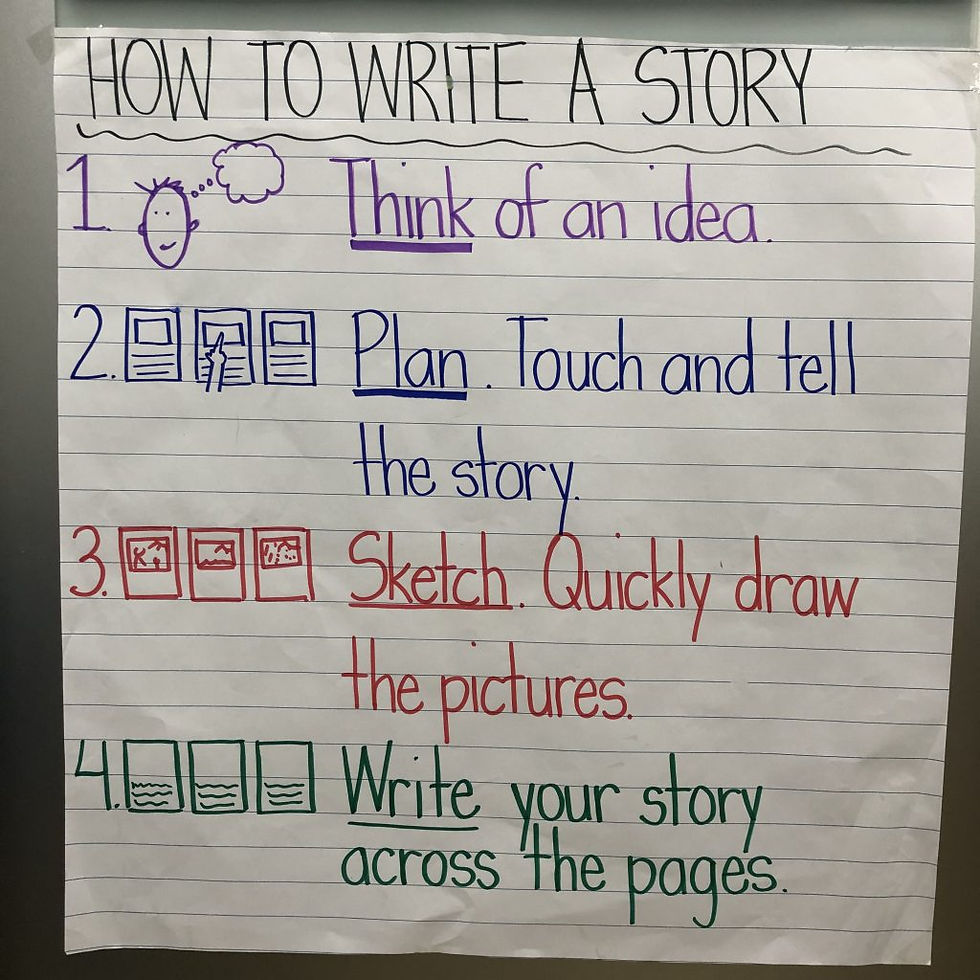N’s International School Experience (Part 4)
- GWTT
- May 28, 2019
- 3 min read
I’ve left the English component of N’s international school experience to the last, as there’s just so much to write about, and I’m not quite sure where to start. It’s been an eye-opening experience for me, since I used to teach English (but at the secondary school level), and some of the things that N does in his international school are what I’ve been trained to frown upon in Singapore.
The Grade Ones have covered a variety of text types throughout the year, and right now, they’re working on non-fiction texts. They’ve learnt how to identify non-fiction texts based on the features that their teacher has taught them, and have gone on to write their own non-fiction “books” based on whatever topics they’re interested in.

N has been really into insects these days, so naturally, he chose to write a “book” about insects. He read many different books on various insects, picked out information which he found interesting, and included them in his “book”.





If you read his “book”, you’ll notice some spelling mistakes and grammatical errors. However, his teacher doesn’t focus on these mistakes, as spelling isn’t the primary focus here. As with all his other pieces of writing in school, creativity is celebrated and the teachers here focus on teaching the children how to make their writing more interesting, rather than trying to ensure that they are spelling their words correctly.
They started the year learning how to write stories, and I liked that the focus was on how to make their stories more interesting.



They’ve also learnt to write realistic fiction, and although N’s stories aren’t very sophisticated, I can tell that he’s trying his best to incorporate the features of realistic fiction, which shows that he understands what it is.
They’ve learnt how to analyse texts and study characters, which is something that we usually teach in Literature, so I was quite impressed when I saw the following charts in his classroom. I’m including the videos of the texts used, for my own reference, but feel free to watch them if you want to know what the stories are about.
For grammar issues, I personally like how the children are encouraged to think about what punctuation marks mean, and shown how words are formed. Spelling isn’t taught explicitly, and spelling errors are NOT picked out. Instead, the children are taught strategies to figure out how words are spelt, and encouraged to use “big words” without the pressure of spelling them accurately.
This post really doesn’t do justice to the amount of work that the teachers and students have done over the past year, but I just wanted to record a bit of the type of learning that N has been doing, because I’m so impressed by the completely different teaching objectives here. I’ve had numerous informal conversations with his teacher, and have learnt so much about teaching young children. (She has given me permission to take photos of her teaching materials and to share them here on my blog, which I thought was very generous of her.)
I honestly don’t know how N will adjust to the Singapore education system, but I guess he will have to figure it out. His time in the international school here has been such an eye-opener for all of us, and our mindsets have changed because we now see that there are other (better?) ways to learn, and hopefully, we can incorporate some of the fun aspects of learning into all three kids’ lives when we return to Singapore.














































































Comments